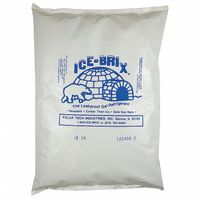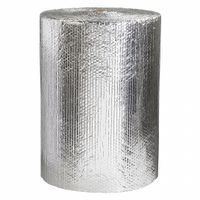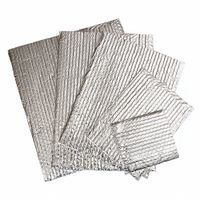Call +(254) 703 030 000 / 751 483 999 / 721 704 777
- Home
- Packaging Shipping
- Protective Packaging
- Temperature Controlled Packaging
.....Read More
Frequently Asked Questions
What are temperature-controlled packaging materials?
Temperature-controlled packaging materials are specialized materials designed to maintain the temperature of their contents within a specified range during transportation and storage. These materials are crucial for industries like pharmaceuticals, food, and biotechnology, where temperature-sensitive products must remain stable to ensure efficacy and safety.
Key components of temperature-controlled packaging include:
1. **Insulation Materials**: These materials, such as expanded polystyrene (EPS), polyurethane, and vacuum-insulated panels (VIPs), reduce heat transfer between the package's interior and exterior, maintaining the desired temperature.
2. **Phase Change Materials (PCMs)**: PCMs absorb or release heat at specific temperatures, helping to maintain a stable internal environment. They are often used in gel packs or pouches that can be pre-conditioned to the required temperature.
3. **Refrigerants**: Gel packs, dry ice, and liquid nitrogen are common refrigerants used to keep the contents cool or frozen. They are selected based on the required temperature range and duration of transport.
4. **Active Systems**: These include battery-powered or electrically powered containers that actively regulate temperature using built-in cooling or heating systems. They are often used for high-value or highly sensitive shipments.
5. **Smart Packaging**: Incorporating sensors and data loggers, smart packaging provides real-time monitoring of temperature conditions, ensuring compliance with regulatory standards and allowing for immediate corrective actions if deviations occur.
Temperature-controlled packaging is essential for maintaining the integrity of products, reducing spoilage, and ensuring compliance with regulatory requirements. It is a critical component in the supply chain for temperature-sensitive goods, providing a reliable solution to the challenges posed by varying environmental conditions during transit.
How do air bubble rolls with reflective film work for insulation?
Air bubble rolls with reflective film work for insulation by combining the thermal resistance of air pockets with the reflective properties of metallic surfaces. The structure typically consists of layers of polyethylene bubbles sandwiched between reflective aluminum foil or metallized film.
The air bubbles create a barrier that reduces heat transfer through conduction. Air is a poor conductor of heat, so the trapped air within the bubbles minimizes the amount of heat that can pass through the material. This is particularly effective in reducing heat loss in winter and heat gain in summer.
The reflective film, usually made of aluminum, addresses heat transfer through radiation. It reflects radiant heat away from the surface, which is especially beneficial in environments where radiant heat is a significant factor, such as in attics or under metal roofs. The reflective surface can reflect up to 97% of radiant heat, significantly reducing the amount of heat that penetrates the building envelope.
When installed, the reflective side should face an air space to maximize its effectiveness. This setup allows the reflective film to bounce radiant heat back towards its source, while the air bubbles slow down heat transfer through conduction. The combination of these two mechanisms makes air bubble rolls with reflective film an efficient and versatile insulation solution.
Overall, this type of insulation is lightweight, easy to install, and resistant to moisture, mold, and pests, making it a practical choice for various applications, including walls, roofs, and floors.
What are the benefits of using insulated mailers for medication?
Insulated mailers for medication offer several benefits, ensuring the safe and effective delivery of pharmaceuticals. Firstly, they provide temperature control, which is crucial for medications that require specific temperature ranges to maintain their efficacy. Insulated mailers help prevent exposure to extreme temperatures during transit, protecting medications from heat or cold that could degrade their quality.
Secondly, these mailers offer protection against physical damage. The insulation materials, often combined with cushioning layers, safeguard the contents from impacts, vibrations, and compression, reducing the risk of breakage or leakage.
Thirdly, insulated mailers enhance the security of the medication. They are often designed to be tamper-evident, providing a clear indication if the package has been opened or compromised, thus ensuring the integrity of the medication upon arrival.
Additionally, insulated mailers are lightweight and cost-effective. They reduce shipping costs compared to heavier packaging solutions while still providing the necessary protection and temperature control. This makes them an economical choice for both pharmaceutical companies and consumers.
Moreover, insulated mailers are often designed to be environmentally friendly. Many are made from recyclable materials or are reusable, aligning with sustainability goals and reducing the environmental impact of pharmaceutical shipping.
Finally, using insulated mailers can improve customer satisfaction and trust. Patients and healthcare providers can be confident that medications will arrive in optimal condition, which is critical for maintaining health and treatment efficacy. This reliability can enhance the reputation of pharmaceutical companies and logistics providers, fostering customer loyalty and trust.
How do pallet liners help in maintaining the temperature of produce?
Pallet liners help maintain the temperature of produce by providing an insulating barrier that reduces heat transfer between the produce and the external environment. These liners are typically made from materials with low thermal conductivity, such as reflective foils, bubble wraps, or foam, which help in minimizing the effects of external temperature fluctuations.
Firstly, pallet liners act as a thermal barrier, reflecting radiant heat away from the produce. This is particularly important in environments where the produce is exposed to direct sunlight or high ambient temperatures. The reflective properties of the liners help in maintaining a cooler internal temperature by bouncing off heat rather than absorbing it.
Secondly, the insulating properties of pallet liners slow down the rate of heat exchange. This is crucial during transportation and storage, where temperature consistency is vital to prevent spoilage. By reducing the rate at which heat enters or exits the pallet, the liners help in maintaining a stable temperature around the produce, thus extending its shelf life.
Additionally, pallet liners can also help in controlling humidity levels. By providing a barrier against moisture, they prevent condensation from forming on the produce, which can lead to mold growth and spoilage. This moisture control is essential in maintaining the quality and freshness of the produce.
Overall, pallet liners are an effective solution for temperature management in the supply chain of perishable goods. They ensure that produce remains at an optimal temperature, reducing spoilage and maintaining quality from farm to table.
What types of cold packs are best for keeping products cold during transit?
The best types of cold packs for keeping products cold during transit include:
1. **Gel Packs**: These are versatile and commonly used for a variety of products. They contain a gel substance that retains cold temperatures for extended periods. Gel packs are flexible, allowing them to conform to the shape of the product, providing even cooling.
2. **Foam Brick Packs**: These are made from a foam material that is infused with a refrigerant gel. They are durable and can maintain cold temperatures for long durations, making them ideal for long-distance shipping.
3. **Dry Ice**: This is solid carbon dioxide and is extremely cold, making it suitable for products that require very low temperatures, such as frozen foods or pharmaceuticals. However, it sublimates over time and requires careful handling due to its extreme cold and potential for gas buildup.
4. **Phase Change Materials (PCMs)**: These packs are designed to maintain specific temperatures by changing phases (solid to liquid and vice versa) at certain temperatures. They are ideal for products that need to be kept within a narrow temperature range.
5. **Water Blankets**: These are simple and cost-effective, consisting of water-filled packs that freeze and maintain cold temperatures. They are suitable for short to medium transit times.
6. **Instant Cold Packs**: These are activated by breaking an internal compartment, causing a chemical reaction that absorbs heat. They are useful for short-term cooling needs and emergencies.
7. **Eutectic Plates**: These are reusable plates filled with a eutectic solution that freezes at a specific temperature. They are durable and provide consistent cooling, ideal for repeated use in shipping containers.
Each type of cold pack has its advantages and is chosen based on factors like the duration of transit, the temperature requirements of the product, and cost considerations.
How long can temperature-controlled packaging maintain the desired temperature?
The duration for which temperature-controlled packaging can maintain the desired temperature depends on several factors, including the type of packaging, the initial temperature of the contents, the external environmental conditions, and the specific temperature range required.
1. **Type of Packaging**: Different types of temperature-controlled packaging, such as insulated boxes, gel packs, phase change materials (PCMs), and vacuum-insulated panels, offer varying levels of thermal protection. Advanced systems like active temperature-controlled containers with built-in refrigeration can maintain temperatures for extended periods, often several days.
2. **Initial Temperature**: The starting temperature of the product and the packaging materials significantly impacts how long the desired temperature can be maintained. Pre-conditioning the packaging and contents to the target temperature can extend the duration.
3. **External Conditions**: The ambient temperature and exposure to external elements such as sunlight, humidity, and wind can affect the performance of temperature-controlled packaging. Packaging designed for extreme conditions may include additional insulation or reflective materials to mitigate these effects.
4. **Temperature Range**: The specific temperature range required for the product also influences the duration. Narrower temperature ranges may require more sophisticated packaging solutions to maintain stability over time.
5. **Duration**: Basic insulated packaging with gel packs might maintain the desired temperature for a few hours to a day, suitable for short-distance transport. More advanced solutions, like those using PCMs or active cooling systems, can maintain temperatures for several days, making them suitable for long-distance or international shipping.
In summary, the duration for which temperature-controlled packaging can maintain the desired temperature varies widely, from a few hours to several days, depending on the packaging technology and conditions.
What industries commonly use temperature-controlled packaging materials?
Industries that commonly use temperature-controlled packaging materials include:
1. **Pharmaceuticals and Biotechnology**: This industry requires strict temperature control to ensure the efficacy and safety of drugs, vaccines, and biologics. Temperature-sensitive medications, such as insulin and certain cancer treatments, must be kept within specific temperature ranges during transportation and storage.
2. **Food and Beverage**: Perishable food items, including dairy products, meats, seafood, and frozen foods, rely on temperature-controlled packaging to maintain freshness and prevent spoilage. The beverage industry also uses such packaging for products like wine and craft beers that require specific temperature conditions.
3. **Healthcare and Medical Devices**: Medical devices and diagnostic products often need temperature regulation to maintain their functionality and integrity. This includes items like blood samples, organ transplants, and certain types of medical equipment.
4. **Chemical and Industrial**: Certain chemicals and industrial products are sensitive to temperature fluctuations, which can affect their stability and performance. Temperature-controlled packaging is used to transport these materials safely.
5. **Cosmetics and Personal Care**: Some cosmetic products, such as natural or organic formulations, require temperature control to preserve their quality and prevent degradation.
6. **Agriculture**: The agricultural industry uses temperature-controlled packaging to transport fresh produce, flowers, and other temperature-sensitive goods to maintain their quality and extend shelf life.
7. **E-commerce and Retail**: With the rise of online shopping, temperature-controlled packaging is increasingly used to deliver perishable goods directly to consumers, ensuring they arrive in optimal condition.
These industries rely on advanced packaging solutions, such as insulated containers, gel packs, and phase change materials, to maintain the required temperature ranges throughout the supply chain.



